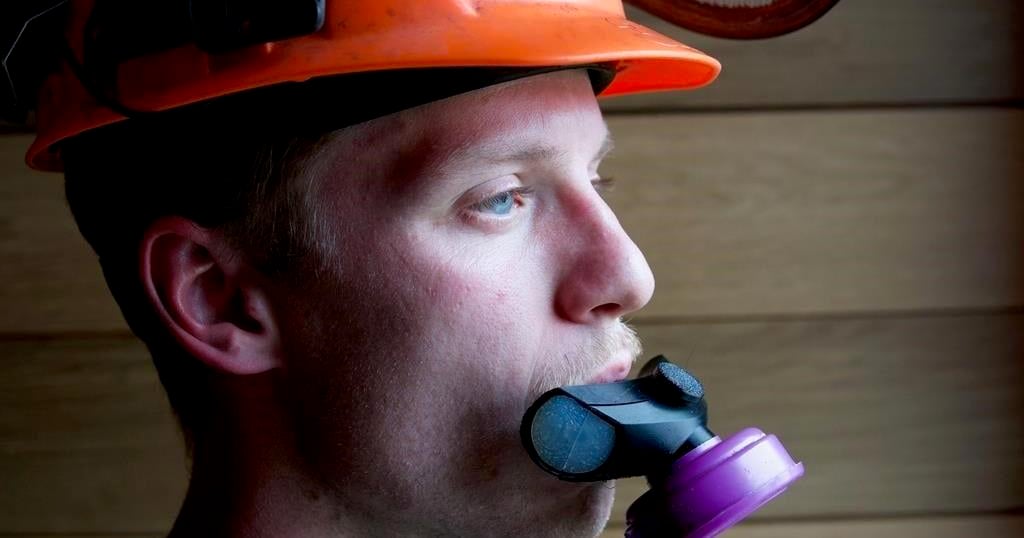British Columbia wildland firefighter Angus Duguid loves his job, but he doesn’t love waking up with headaches or a clogged nose from inhaling smoke.
So he turned his skills as a design student at Emily Carr University to fixing the problem for himself and, he hopes, fellow firefighters.
“We see a fair bit of toxic debris and combustibles when we’re on the fire line as wildland firefighters and I was thinking about why we don’t have sort of designated masks,” said Duguid.
The result is Respire, a sleek-looking respirator that looks something like a scuba-diving mouthpiece and is much smaller than current commercially available respirators.
The device produced by Duguid as his final-year project at Emily Carr is functional and the firefighter of five years hopes to eventually get it on the market, filling what he says is a gap.
Unlike structural and urban firefighters who are all equipped with self-contained breathing apparatuses, Duguid said wildland firefighters have traditionally lacked suitable respirators.
The BC Wildfire Service said online last month that respiratory protection certified by the National Institute for Occupational Safety and Health was made available to all operational staff this wildfire season, on a “non-mandatory, opt-in” basis.
But it said wildland firefighters have historically used bandanas or cloth masks as respiratory protection on the fire line, with these offering “little to no protection” against small particulates in wildfire smoke.
The agency said it couldn’t provide specific responses, citing restrictions on government agencies during the provincial election campaign.
Last year’s wildfire season was “particularly bad” said Duguid and his crew spent lots of time in smoke that he said was sometimes an “unavoidable” part of the job.
Duguid said respirators on the market were not specifically designed for wildland firefighters.
For example, he said some working days last 16 hours, with firefighters hiking up hills and carrying 100 pounds of gear and breathing hard, and other times breathing much easier. The key was to come up with a respirator that could be easily deployed for short periods and then quickly removed many times a day.
He said he was helped with the design for Respire by his firefighter colleagues, joking that “they are smarter than I thought.”
The device is only worn in the mouth and does not cover the nose, making it small enough to clip on a shirt pocket for easy access.
Duguid, who graduated from university in April, said he is still fine-tuning the idea.
He said he worried about the long-term health effects of exposure to smoke, calling it “death by 1,000 paper cuts.”
Calgary-based emergency physician Dr. Joe Vipond said wildfire smoke contains gases and small particles of pollution known as PM 2.5, which can burn eyes and irritate respiratory tracts, making people cough or feel short of breath.
Vipond, a past president of the Canadian Association of Physicians for the Environment, said the PM 2.5 could affect the cardiovascular system, causing heart attacks, strokes and even killing people.
“The other thing we know about PM 2.5 is that if you are exposed to it over long periods of time, not only during acute events when you see the smoke outside but if you have a lot of exposure to it over time, it also has an affect on mortality,” said Vipond.
Vipond also noted that multiple studies have shown urban and wildland firefighters have higher rates of cancer than the rest of the population.
Duguid said he hasn’t been able to test the device in the field because of legal restrictions, but hopes his fellow firefighters will be using it in a few years.
“But, honestly, even if it just sparks a conversation, I think it’ll be a win,” said Duguid.
This report by The Canadian Press was first published Oct. 7, 2024.
